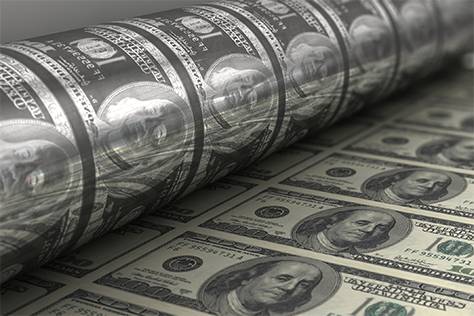The euro settled near six-week highs against the dollar before an expected ECB interest rate cut on Thursday, while the US dollar rebounded mildly after weak labor data.
Recent data showed the US services sector shrank for the first time in a year, while the labor sector is showing signs of weakness as well, leading to a wave of US treasury notes purchases and boosting the odds of multiple Fed rate cuts this year.
The dollar index is up 0.37% today against the yen at 143.34, while rising 0.25% on the Swiss franc to 0.82025.
The euro is little changed at $1.1416, approaching a six-week high, while the pound steadied as well at $1.3565.
Markets are on edge before the European Central Bank’s likely decision today to cut interest rates by 0.25%, the eighth such cut in 13 months, as eurozone inflation backs off recent highs.
The latest eurozone data showed consumer prices fell below the 2% ECB target, bolstering the odds of a rate cut.
Jobs Data
Markets await the crucial US payrolls report on Friday after the ADP index showed the private sector added far less jobs than expected last month.
The official government report is expected to show the addition of 130 thousand new jobs in May, and for unemployment to remain steady at 4.2%.
The markets were in turmoil since Trump’s aggressive reciprocal tariffs in early April, before freezing many of them and announcing new ones, sending investors away from US assets.
The dollar’s weakness has been the main talking point in these weeks, with economists polled by Reuters expecting even more losses for the greenback amid persistent concerns about the US federal budget deficit.
The dollar index is down 9% so far this year to 98.87, and is heading for the worst yearly performance since 2017.
Trump Calls for Rate Cuts
US President Donald Trump intensified his public pressures on Fed Chair Jerome Powell to cut interest rates, and compared the slow pace of the Fed to the rapid rate cuts by the ECB.
Minneapolis Fed President Neil Kashkari acknowledged weakness in the labor sector but asserted the importance of more data before changing monetary policies.


